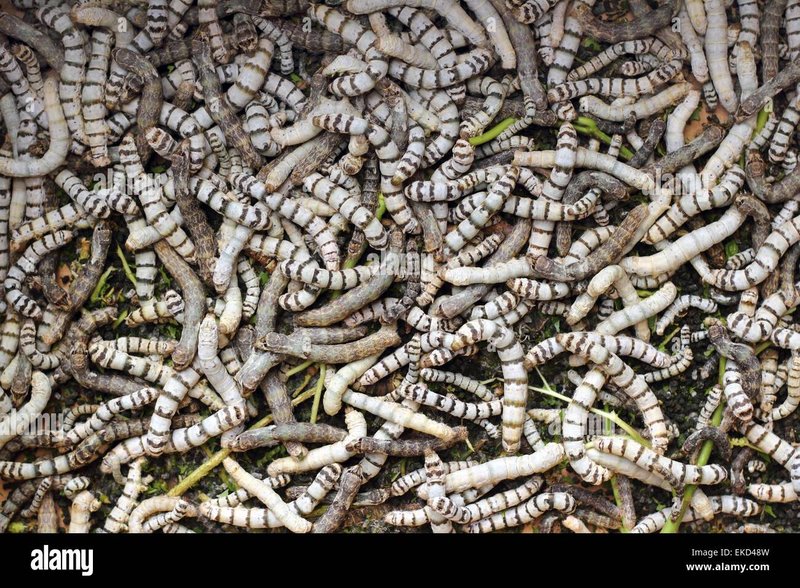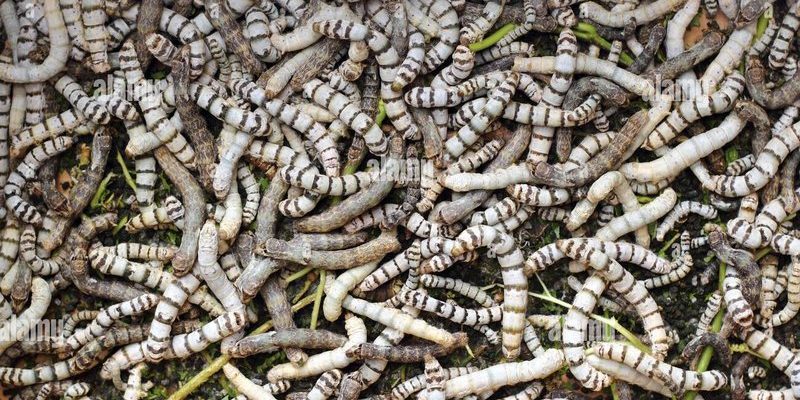
Just like how we remember our favorite places by the smell of coffee brewing or the texture of soft blankets, silkworms also have their own ways of identifying familiar elements in their environment. Understanding how they do this opens up a whole new world of insight into their behavior and biology. So, grab a cozy seat, and let’s unpack this together!
What Are Silkworms, Anyway?
Silkworms, or *Bombyx mori*, are not worms at all; they are actually the larvae of the silk moth. They are best known for producing silk—yes, that luxurious fabric we all love. The journey starts when a female moth lays eggs, which hatch into tiny caterpillars. These little guys munch on mulberry leaves and grow rapidly, often doubling in size within days.
You might find it fascinating that these creatures undergo several molts before they simmer down and spin cocoons. This transformation process takes about 6-8 weeks. As they prepare for the next stage of their life cycle, they create those iconic silk cocoons that have been coveted for centuries. But what’s really interesting is how their sensory systems work during this time.
How Do Silkworms Sense Their Environment?
Silkworms rely heavily on their sense of smell and touch to navigate their world. They possess specialized sensory organs called *chemoreceptors* and *mechanoreceptors*. The chemoreceptors help them detect odors and pheromones, while the mechanoreceptors pick up vibrations and textures.
Think of chemoreceptors as your nose and mechanoreceptors as your skin. Just like how you can sense the warmth of a cozy blanket or the aroma of baking cookies, silkworms can detect scents and textures that guide their behavior. This ability is crucial for their survival.
For instance, they can smell pheromones released by other silkworms. This helps them identify mates or recognize friendly neighbors in their colony. So, yes—silkworms definitely have a knack for recognizing familiar scents!
Do Silkworms Recognize Familiar Scents?
The short answer is yes! Silkworms are quite capable of recognizing familiar scents. Research suggests that they are particularly sensitive to the smells of mulberry leaves, which is their primary food source. Silkworms have a well-developed olfactory system that allows them to identify chemical signals in their environment.
You might be asking, “How does this impact their behavior?” Well, when silkworms encounter a scent they recognize, they often exhibit specific behaviors, such as increased feeding activity or a sense of calm. For example, if they smell mulberry leaves, they might become more active and eager to eat. It’s like how the smell of your favorite pizza can make you feel hungry all over again!
Silkworms can also remember these scents over time, which helps them navigate their way to food sources and avoid areas that may be harmful. This ability to recognize familiar scents is essential not just for their survival, but also for their development.
Texture Recognition in Silkworms
Now, let’s dive into textures. Just as silkworms recognize scents, they can also feel and respond to different textures in their environment. The mechanoreceptors in their body allow them to sense various surfaces—be it the roughness of a leaf or the softness of a silk cocoon.
Imagine a silkworm crawling over a smooth surface compared to a rough one. The texture can influence how they move or where they choose to rest. When they crawl on a soft surface, they might feel safe and secure, while a rough surface might trigger alarm or discomfort.
This sensitivity to texture plays a vital role in their life cycle. For example, when silkworms are ready to spin their cocoons, they look for that perfect spot—a surface that feels just right. They prefer to spin their cocoons in places that offer comfort and safety. It’s nature’s way of ensuring they have the best chance to transform into moths.
Why This Matters: Understanding Silkworm Behavior
Recognizing scents and textures isn’t just interesting; it has real implications for how we cultivate and care for silkworms. For instance, farmers need to provide the right conditions for these little creatures to thrive. By understanding their sensory preferences, farmers can create optimal environments that support their growth and silk production.
Additionally, this knowledge can also help in scientific research. By studying how silkworms interact with their environment, researchers can uncover insights into other insects or even broader biological processes. It’s a fascinating area of study that showcases the interconnectedness of life.
Understanding this aspect of silkworms also emphasizes the importance of biodiversity. Protecting the delicate ecosystems that sustain these creatures ensures that we continue to benefit from their silk production and learn from their unique adaptations.
The Importance of Familiar Scents and Textures in Nature
The ability to recognize familiar scents and textures isn’t unique to silkworms; it’s common in many animals. This sensory skill enhances survival by helping creatures locate food, avoid predators, and find mates. In the wild, familiar scents can signify safety and comfort, just like how your favorite place feels welcoming.
On a broader scale, this behavior highlights the intricate relationships between organisms and their environments. When animals can recognize familiar stimuli, they can adapt, thrive, and continue their species. It’s a delicate dance of survival that’s often unseen but incredibly important.
In the world of silkworms, this ability helps them navigate their life cycle efficiently. It shapes their experiences, influencing how they interact with each other and their surroundings. Just like us, they have their own little world filled with scents and textures that guide their journey.
So, do silkworms recognize familiar scents or textures? Absolutely! These little creatures use their impressive sensory systems to navigate their environment in a way that’s both practical and essential for survival. Recognizing familiar scents helps them find food and mates, while their sensitivity to textures plays a crucial role in spinning their iconic silk cocoons.
By understanding how silkworms interact with their world, we gain valuable insights into the complexities of nature and the importance of maintaining biodiversity. Just like you and me, silkworms experience a rich tapestry of scents and textures that influence their lives. So the next time you see silk, remember the little workers behind the fabric and the remarkable senses they use to thrive.

